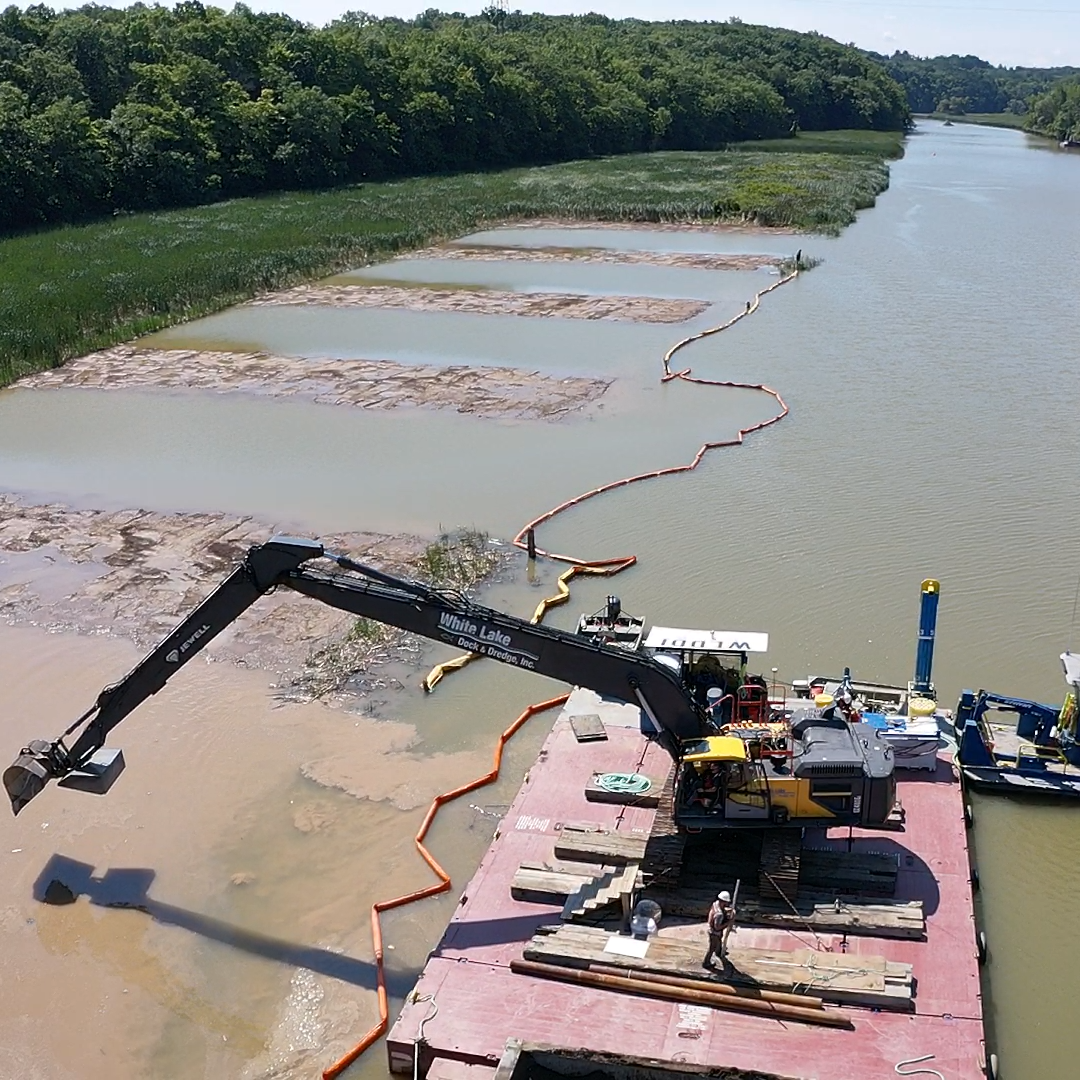Project
Lower Genesee River

Project Summary
LOCATION: Rochester, New York
CLIENT(S): NYSDEC
SCOPE(S) PERFORMED: Dredging, Sediment Management, Capping, Wetland Restoration, Hydrographic Surveying
White Lake Dock & Dredge was responsible for dredging nearly 32,000 cubic yards of metals-impacted sediment from four areas of the Lower Genesee River, two of which are cattail wetland marshes. Materials varied but primarily consisted of soft silty sand and clay. The dredge template consisted of complex dredge-to surfaces including varying side slopes up the banks of the river. Materials were mechanically dredged utilizing a customized Volvo EC480 EL Long Reach excavator (equipped with RTK-GPS dredge guidance software and White Lake Dock & Dredge’s environmental dredge bucket). Dredging for this project was performed from upstream to downstream with a target depth of 28” below existing conditions. White Lake Dock & Dredge successfully achieved an average cut depth of 28” with only 1.7% over-dredge performed.
River currents within the work area were challenging and varied drastically throughout the project depending on weather conditions. White Lake Dock & Dredge was able to adhere to the 50 NTU water quality standards through use of turbidity curtain controls to isolate work areas and also through innovative dredging techniques within the wetland areas.
All dredged materials were deposited into lined dewatering pits and solidified with Portland Cement to meet landfill acceptance criteria before being loaded into lined trucks for disposal. White Lake minimized the Portland Cement usage to ~5.5% by weight while also having a limited footprint that limited us to a maximum of 24 hr. hold time for drying materials. In total, more than 45,000 tons of materials were disposed of over a 5-month period. These dewatering/solidification pits along with all other temporary infrastructure (access dock, water treatment system, etc.) were confined to a very small site (less than 1.5 acres in size) within an active wastewater treatment operation. In total, more than 1,300 trucks were routed through this challenging worksite within a 5-month period without a single health and safety incident through close coordination with our trucking contractor and plant operations.
Following the completion of dredging operations, White Lake Dock & Dredge installed a two-layer sand and crushed stone cover in two work areas to restore the river bottom to preexisting conditions. Additionally, White Lake installed a sand cap followed by hydric topsoils and regional wetland plantings to restore the two wetland work areas. In total, White Lake Dock & Dredge placed over 27,300 cubic yards of cap materials and 30,000 wetland plants. Cap thicknesses were placed within an average 4” tolerance and confirmed with both hydrographic survey as well as core sampling to confirm several areas that experienced differential settling.
If you’re in need of our services, reach out to our staff. We’d be happy to connect you with one of our senior staff to discuss your project in detail.
